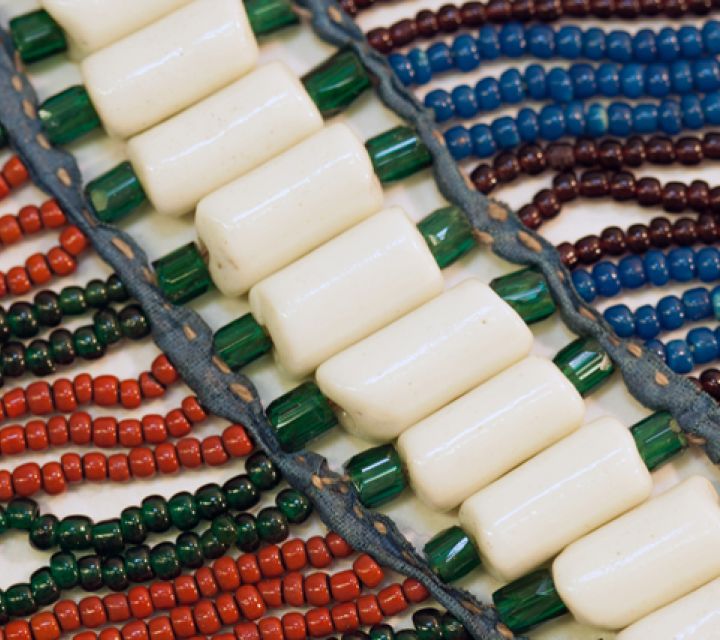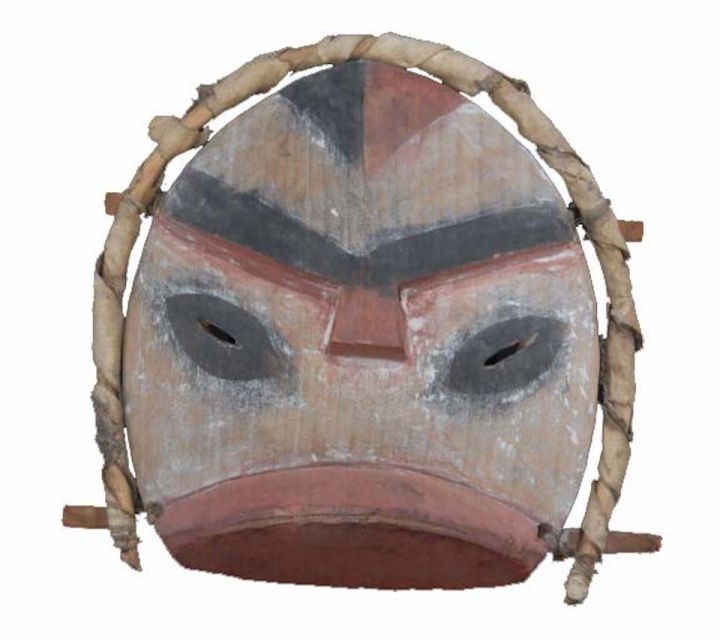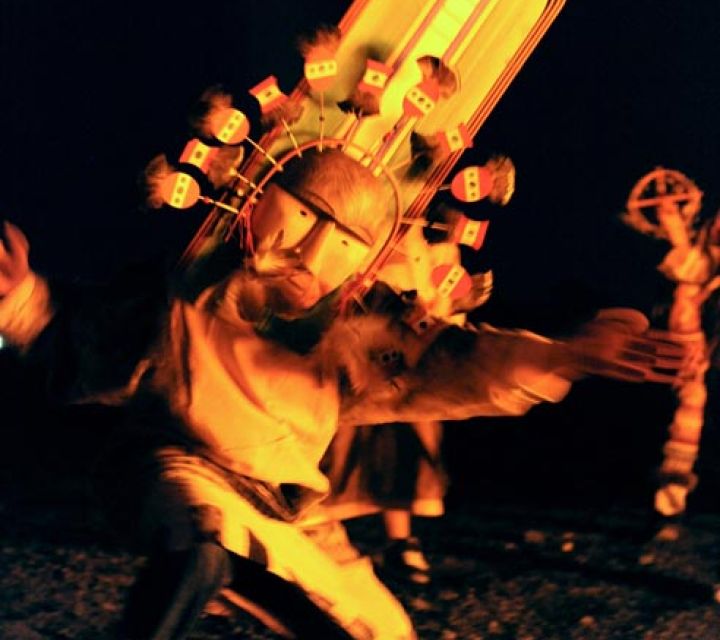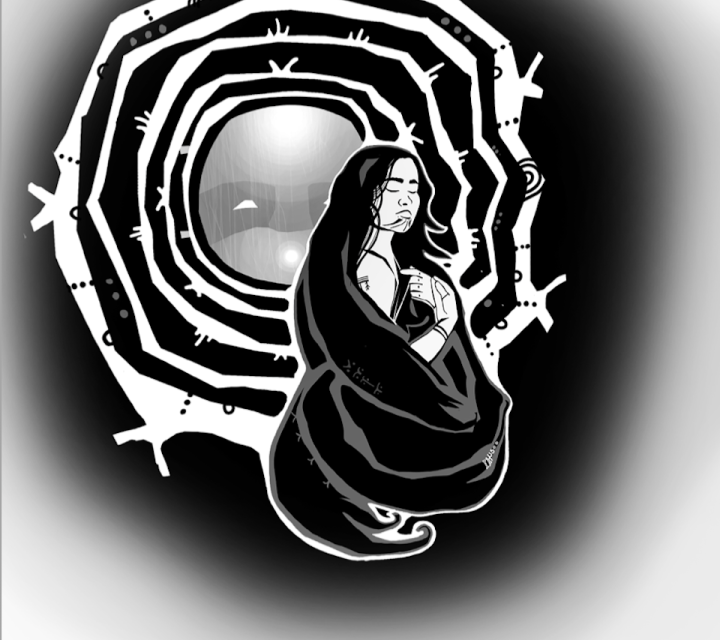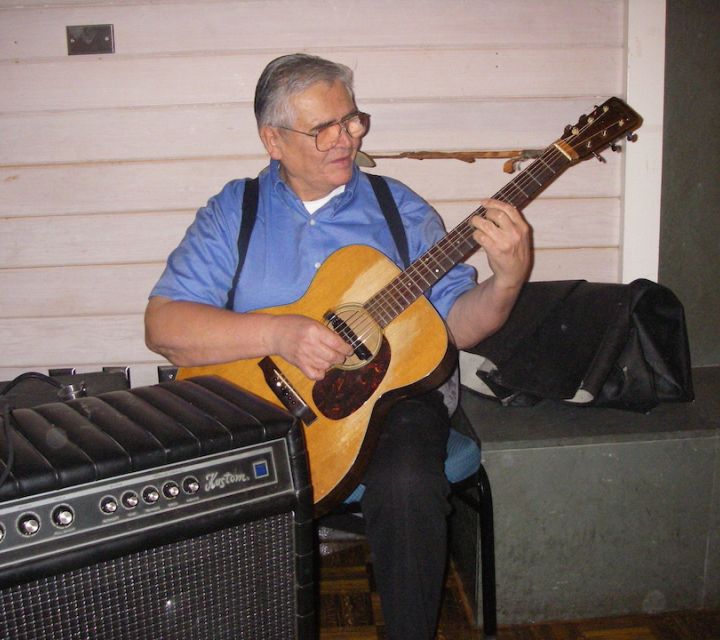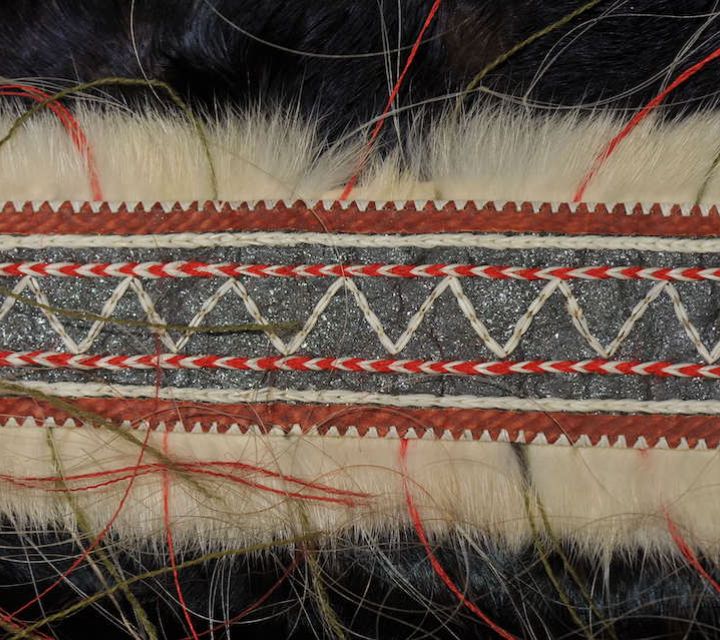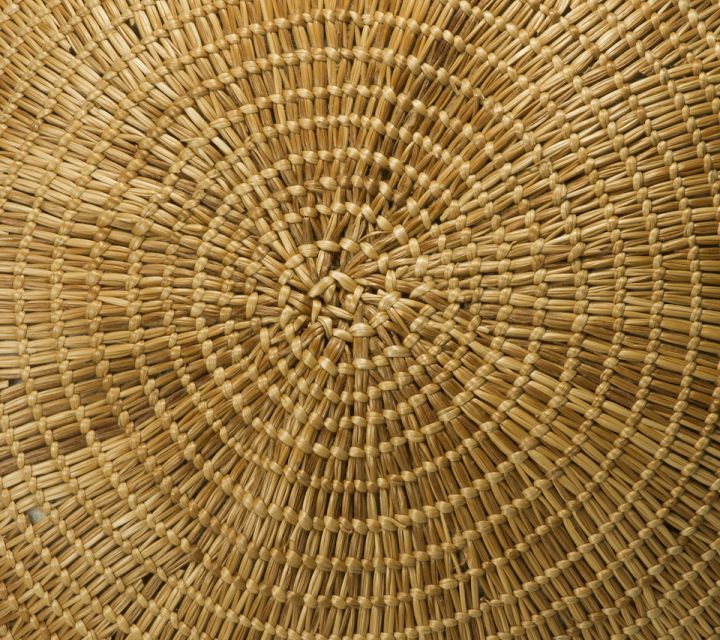Alutiiq Arts
When We Were Seals. Oil and acrylic on panel, by Lena Snow Amason, 2022. Supported by the Munartet Project.
Cultural Arts
The arts are a source of pride for the Alutiiq community. They highlight the ingenuity of ancestors, the beauty of the Alutiiq world, and the endurance of tradition. Creating beautiful items expresses a connection to ancestors and respect for the environment that sustains human life.
Alutiiq artists explore their identities by uniting traditional techniques, forms, materials, or subjects with those of the twenty-first century. Their work is symbolic of Alutiiq culture in the modern age.
Alutiiq arts also reflect efforts to reawaken Alutiiq traditions—to revitalize cultural practices suppressed and hidden under colonial pressure. They are examples of living culture.
BEADING
With shimmering glass beads, Autiiq artists make jewelry and headdresses, decorate clothing, and make pictures.
CARVING
Through carving, Alutiiq artists have long produced tools essential to daily life and designed beautiful works that recorded spiritual beliefs.
DANCING
Dance is a vibrant cultural practice, accompanied by singing, drumming, and the use of cultural objects. Dancers perform for enjoyment and to tell stories.
GRAPHIC ARTS
Painting, drawing, and incising add beauty to objects and record history.
MUSIC
Music is a form of storytelling and Alutiiq people enjoy sharing everything from traditional songs to orthodox hymns and popular music.
SEWING
Alutiq seamstresses are known for their detailed stitching and embroidery, which transform animal hides into works of art.
STORYTELLING
Storytelling is both entertainment and education. Youth learn Alutiiq history from storytellers and they are reminded of community values.
WEAVING
From wild grasses and spruce root, Alutiiq weavers created beautiful container, mats, and even clothing.

